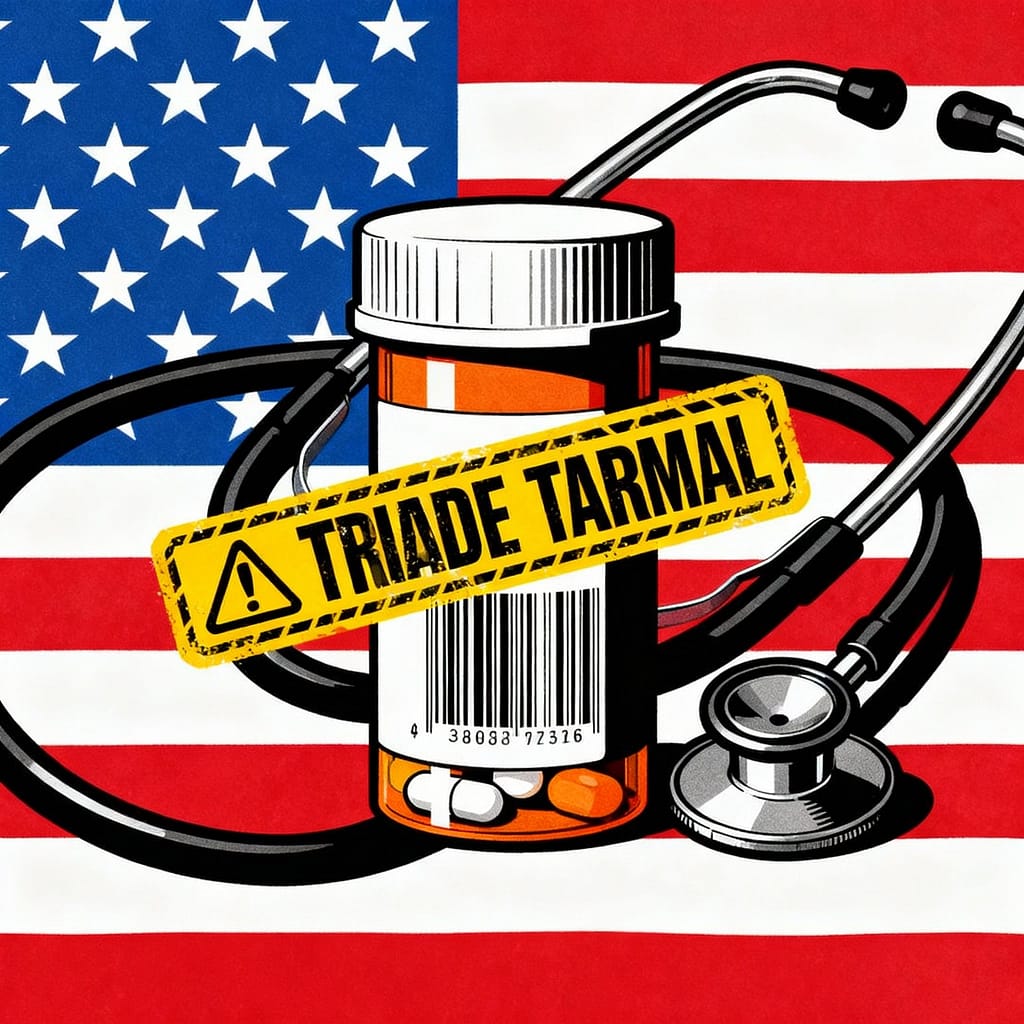President Trump’s announcement of sweeping 100% tariffs on branded pharmaceutical imports, effective October 1, 2025, represents one of the most aggressive trade policy moves in healthcare history. While tariffs on steel or automobiles follow traditional trade playbooks, applying them to life-saving medicines enters uncharted territory where economic theory collides with medical necessity.
The fundamental question remains: Can a policy designed to secure America’s pharmaceutical supply chain avoid becoming economically counterproductive when applied to goods that patients literally cannot live without?
The Strategic Rationale
National Security Imperative
The administration’s primary justification centers on supply chain vulnerability exposed during the COVID-19 pandemic. America imports significant portions of its pharmaceutical supply from India and China, with India alone accounting for 10.6% of US pharmaceutical imports worth $9.2 billion in 2023. The concern is legitimate—if hostile nations control essential medicine production, they could effectively leverage American patients’ health during geopolitical crises.
The Exemption Strategy
The policy includes a crucial carve-out: companies “breaking ground” or with facilities “under construction” in America will avoid tariffs entirely. This creates powerful incentives for pharmaceutical reshoring, with companies already responding through over $270 billion in manufacturing commitments, including Eli Lilly’s recent $6.5 billion Houston facility announcement.
Critical Policy Distinctions
Branded vs. Generic Differentiation
The tariffs specifically target “branded or patented pharmaceutical products,” not generic drugs. This distinction is crucial because generics constitute the majority of Indian pharmaceutical exports to America, and many major Indian companies—including Sun Pharma, Cipla, Dr. Reddy’s, and Lupin—already operate FDA-approved manufacturing facilities within the US. The Indian Pharmaceutical Alliance has clarified that generic medicines remain unaffected, potentially limiting the policy’s disruptive impact on essential medication supplies.
Existing Manufacturing Infrastructure
Major Indian pharmaceutical companies have established substantial US presences over decades. Sun Pharma operates facilities across New Jersey, Philadelphia, Detroit, Wilmington, and Chicago, while Lupin maintains plants in Somerset and Baltimore. This existing infrastructure may provide significant protection against tariff impacts for generic drug supplies.
The Economic Reality Check
Inelastic Demand Problem
Pharmaceuticals differ fundamentally from other commodities because demand remains constant regardless of price—economists call this “perfectly inelastic demand”. Patients requiring insulin, chemotherapy, or cardiac medications must purchase them whether they cost $30 or $300. This characteristic makes healthcare the worst possible sector for traditional tariff strategies.
Current Supply Chain Crisis
America already faces a severe drug shortage crisis, with 253 active shortages as of June 2025—down from a peak of 323 but still representing significant patient impact. More concerning, 42% of current shortages began in 2022 or earlier, indicating systemic supply chain problems that predate any tariff considerations. The average shortage affects approximately 500,000 Americans, with over 30% of those impacted being seniors aged 65-85.
Immediate Implementation Risks
Price Shock Consequences
Tariffs function as taxes paid by American importers, not foreign exporters—costs that transfer directly to patients and healthcare systems. For branded drugs already priced at premium levels, doubling import costs through 100% tariffs could create unprecedented affordability crises for patients, insurers, and government programs like Medicare and Medicaid.
Timeline Mismatch
Pharmaceutical manufacturing facilities require 3-5 years to become operational, creating a prolonged period where American consumers bear full tariff costs before realizing any supply chain benefits. This timeline disconnect means immediate patient harm for potential long-term security gains.
Supply Disruption Amplification
Generic drug manufacturers operating on razor-thin margins may find continued US market participation unprofitable under significant tariffs, potentially exiting entirely and worsening existing shortage problems. With manufacturing quality issues, raw material availability, and regulatory changes already contributing to current shortages, additional supply chain disruption could prove catastrophic.
Market Response and Adaptation
Pharmaceutical companies have taken the administration’s warnings seriously, with major players announcing substantial US manufacturing investments. However, the policy’s success depends on whether construction timelines align with tariff implementation schedules and whether domestic production can achieve cost competitiveness with established international suppliers.
The American College of Physicians has characterized prescription drug shortages as a public health crisis, warning that patients suffer harm when essential treatments become unavailable and healthcare systems absorb significant operational strain.
The Ultimate Trade-off
This pharmaceutical tariff policy represents a stark choice between immediate patient welfare and long-term supply chain security. The administration is betting that enduring short-term healthcare cost increases and potential supply disruptions justifies achieving pharmaceutical independence from potentially adversarial nations.
For patients facing rising medication costs and healthcare systems already struggling with drug shortages, this policy may feel less like strategic planning and more like economic punishment for America’s historical reliance on global pharmaceutical supply chains.
The October 1 implementation date will provide the first real-world test of whether trade policy tools designed for traditional commodities can successfully address national security vulnerabilities in essential healthcare without causing more harm than the problems they aim to solve.


the analysis nicely explains the issue and raises a very serious question whether this will be a masterstrokey or a catastrophe.
We will have to wait and see for another TACO moment.